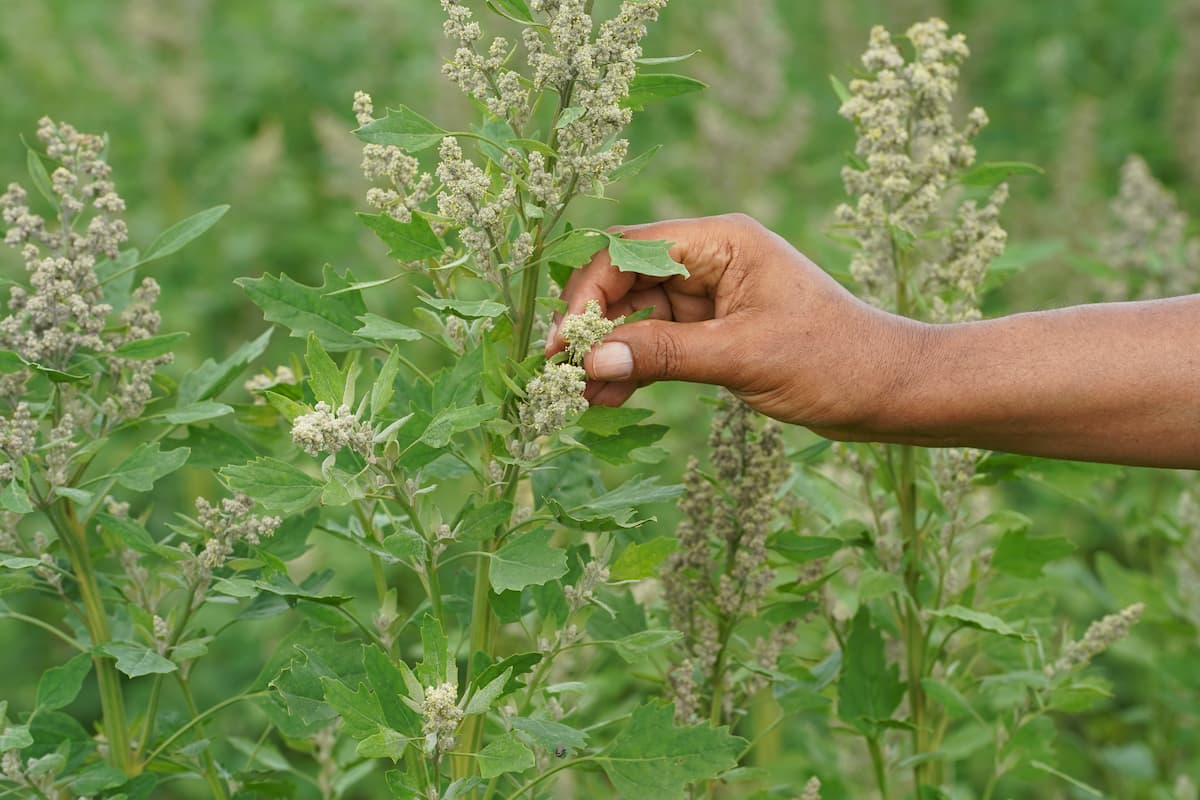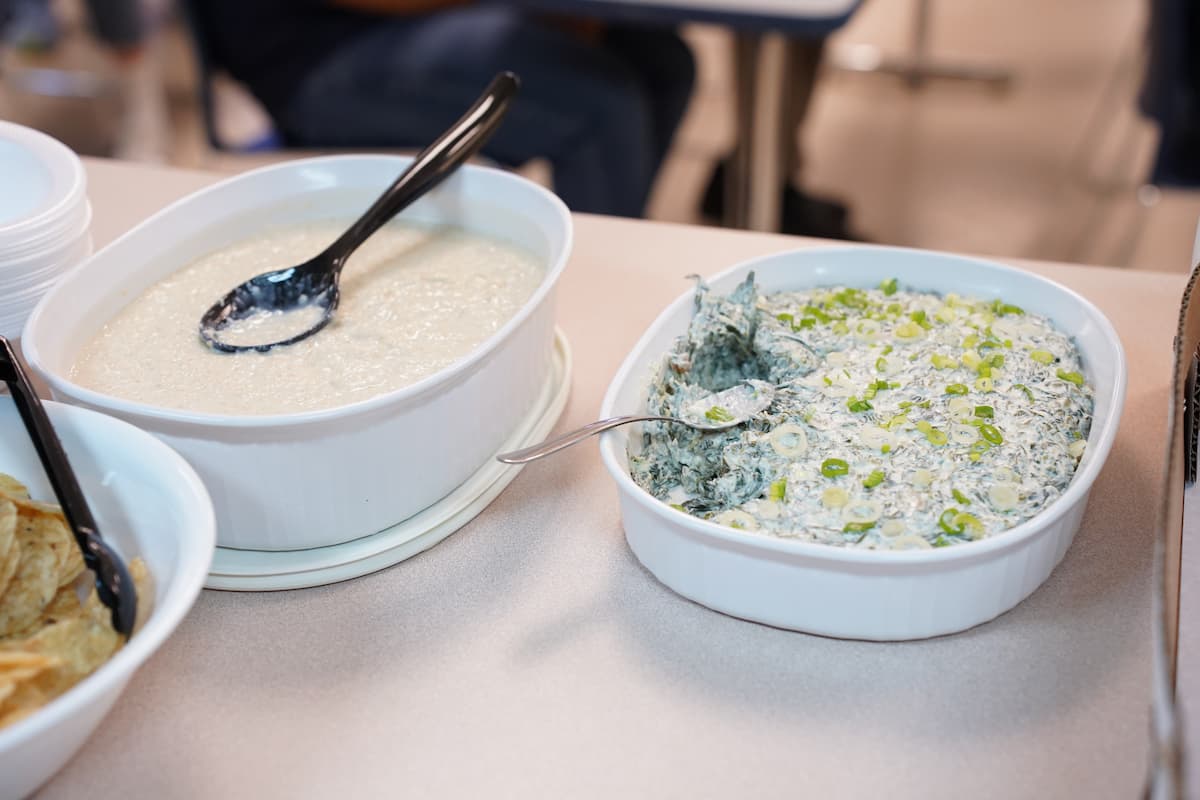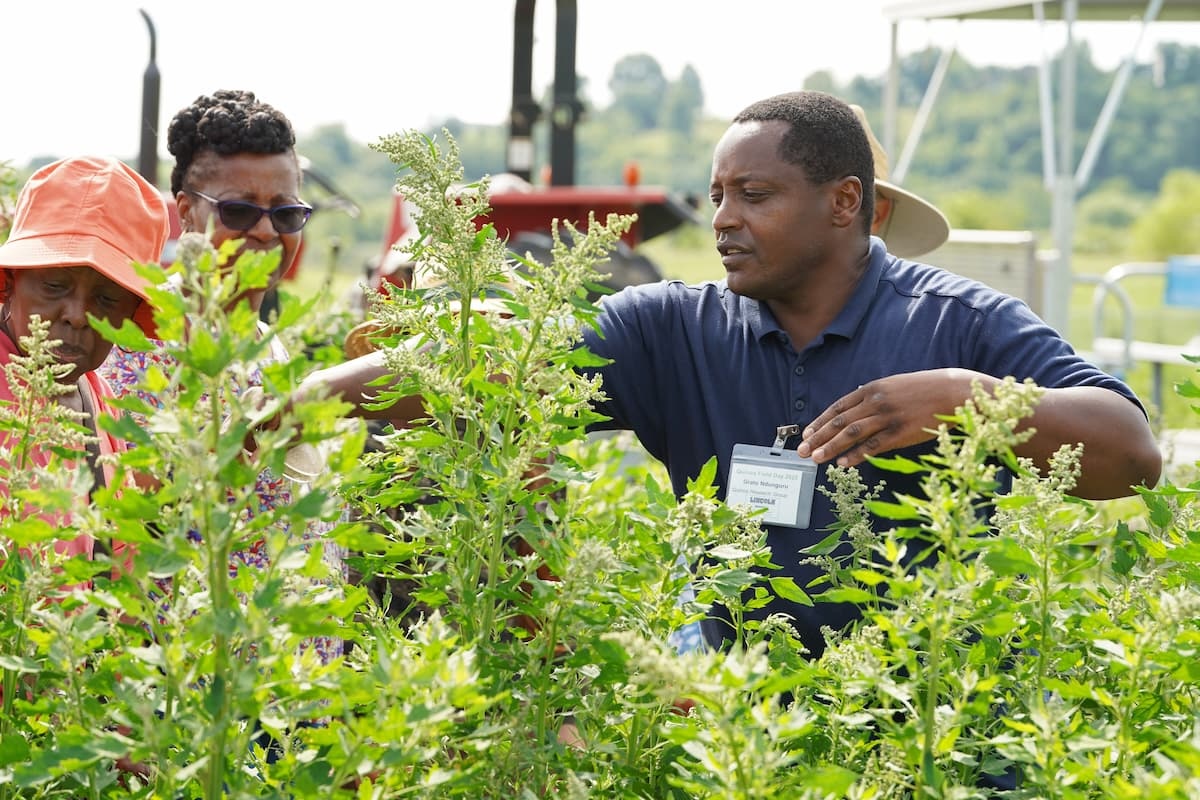Cultivators Come to Carver to Catch Up on Quinoa
Office of Communications and Marketing
Young Hall
820 Chestnut Street
Jefferson City, MO 65101
 Lincoln University of Missouri is leading the nation in quinoa research, identifying viable strains and developing new harvesting techniques.
Lincoln University of Missouri is leading the nation in quinoa research, identifying viable strains and developing new harvesting techniques.
Lincoln University of Missouri (LU) hosted Quinoa Field Day on June 15, inviting Missouri growers to learn about the latest research and advances in quinoa production.
Hosted at George Washington Carver Farm, the event brought a diverse group of producers to Jefferson City for field demonstrations and classroom sessions.
Quinoa is an ancient, hardy crop known globally as a superfood. As a highly nutritious alternative to rice, quinoa is immensely popular in the United States, which imports roughly 30 million kilograms — or 66 million pounds — of the crop every year.
Despite its popularity, domestic production of quinoa is almost nonexistent, especially in the Midwest.
Lincoln University seeks to help farmers unlock quinoa’s untapped potential by identifying which varieties grow best in Missouri and researching advanced harvesting techniques to maximize the crop’s economic potential.
“It’s been really amazing to hear about the prospects of quinoa and what’s possible,” LU President John Moseley said at the event. “We’ve been studying the greens for nutritional value, we’re looking at ground cover, how much rain it can take, how it grows in hot and dry weather. It’s a lot of fun to be a part of what we do here every day.”
After introductions, attendees at Quinoa Field Day rode trolleys down to the farm’s quinoa fields. There, the group split into two stations where Lincoln researchers discussed their projects and their potential applications.
At one station, Grato Ndunguru, a research technician for LU, showcased a new harvesting technique he’s been researching.
Typically, quinoa producers only harvest their crops for the grain. Ndunguru, on the other hand, has determined that by harvesting quinoa’s leafy greens, producers can get two products from one plant.
Quinoa’s greens can be prepared and eaten in many ways, similar to other leafy greens.
 Attendees at Quinoa Field Day were treated to quinoa-green dip and quinoa pudding, made by Dr. Safiullah Pathan’s wife.
Attendees at Quinoa Field Day were treated to quinoa-green dip and quinoa pudding, made by Dr. Safiullah Pathan’s wife.
Showcasing this, Dr. Safiullah Pathan, an associate professor of crop science, brought a quinoa-green dip made by his wife to the event, along with quinoa pudding.
Attendees ensured neither the dip nor the pudding lasted until the end of the day.
Getting a second product wasn’t the only result of Ndunguru’s technique. By harvesting the leafy greens early, the cut stalks of the plant branch and multiply, bringing a bigger grain harvest down the road.
All growers could benefit from this model, but it may be especially beneficial for urban and limited-resource farmers who need to get the most out of their crops.
As Ndunguru explained his research, attendees walked through rows of quinoa, touching the plants and asking questions.
James Oermann, a Jefferson City resident, said he came to the event to find out more about Lincoln’s farms and quinoa. Oermann gardens as a hobby, producing vegetables and seeds.
While he doesn’t see himself becoming a commercial producer, Oermann was interested in quinoa’s potential.
Attendees at the other station learned about Dr. Addissu Ayele’s work to determine what levels of irrigation and nutrients work best for quinoa.
Quinoa is resilient and adaptable, able survive harsh environmental conditions like drought and produce even in poor soils, making it an ideal crop for Missouri farmers building sustainable systems.
 Researcher Grato Ndunguru interacts with attendees at Quinoa Field Day.
Researcher Grato Ndunguru interacts with attendees at Quinoa Field Day.
Ayele’s research seeks to discover the most viable combination of irrigation levels and soil nutrients for growing quinoa effectively.
Thus far, his research points to employing drip irrigation so growers can sustain high yields while conserving water. As for nutrients, Ayele’s quinoa seems to respond well to high levels of Nitrogen.
By combining drip irrigation with targeted and balanced nutrient application, Ayele said growers could enhance productivity and improve resource efficiency.
After touring the fields, attendees returned to Carver Farm’s indoor classroom to hear more about the topics discussed outside.
Quinoa Field Day is in the books, but there are plenty more events on the way. Head to Lincoln’s event calendar to find a workshop or class that interests you.
For more information on Lincoln’s research on quinoa, reach out to Dr. Safiullah Pathan at PathanS@lincolnu.edu.
